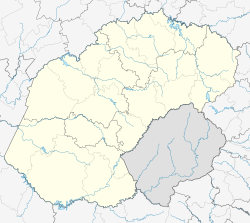
The Second Boer War, also known as the Boer War, the Anglo–Boer War, or the South African War, was a conflict fought between the British Empire and the two Boer Republics over the Empire's influence in Southern Africa from 1899 to 1902.

Pieter Arnoldus "Piet" Cronjé was a South African Boer general during the Anglo-Boer Wars of 1880–1881 and 1899–1902.
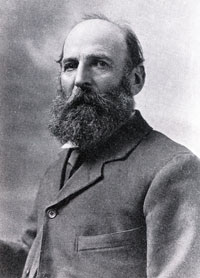
Jacobus Herculaas de la Rey, better known as Koos de la Rey, was a South African military officer who served as a Boer general during the Second Boer War. De la Rey also had a political career and was one of the leading advocates of Boer independence.

Koffiefontein is a small farming town in the Free State province of South Africa. The name means coffee fountain in Afrikaans.
The following lists events that happened during 1900 in South Africa.

Christiaan Rudolf de Wet was a Boer general, rebel leader and politician.

The Battle of Modder River was an engagement in the Boer War, fought at Modder River, on 28 November 1899. A British column under Lord Methuen, that was attempting to relieve the besieged town of Kimberley, forced Boers under General Piet Cronjé to retreat to Magersfontein, but suffered heavy casualties altogether.
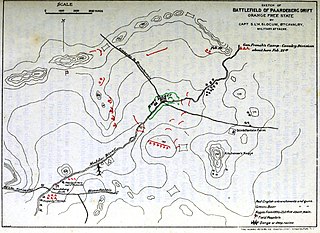
The Battle of Paardeberg or Perdeberg was a major battle during the Second Anglo-Boer War. It was fought near Paardeberg Drift on the banks of the Modder River in the Orange Free State near Kimberley.

The Battle of Magersfontein was fought on 11 December 1899, at Magersfontein, near Kimberley, South Africa, on the borders of the Cape Colony and the independent republic of the Orange Free State. British forces under Lieutenant General Lord Methuen were advancing north along the railway line from the Cape to relieve the siege of Kimberley, but their path was blocked at Magersfontein by a Boer force that was entrenched in the surrounding hills. The British had already fought a series of battles with the Boers, most recently at Modder River, where the advance was temporarily halted.

The Queen's South Africa Medal is a British campaign medal awarded to British and Colonial military personnel, and to civilians employed in an official capacity, who served in the Second Boer War in South Africa. Altogether twenty-six clasps were awarded, to indicate participation in particular actions and campaigns.

The siege of Kimberley took place during the Second Boer War at Kimberley, Cape Colony, when Boer forces from the Orange Free State and the Transvaal besieged the diamond mining town. The Boers moved quickly to try to capture the area when war broke out between the British and the two Boer republics in October 1899. The town was ill-prepared, but the defenders organised an energetic and effective improvised defence that was able to prevent it from being taken.
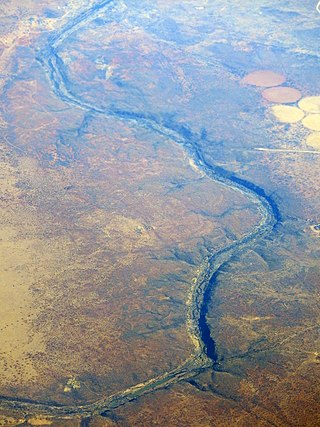
The Riet River is a westward-flowing tributary of the Vaal River in central South Africa. In precolonial times the Riet was known as the Gama-!ab, a !Kora name meaning 'muddy'. Its main tributary is the Modder River and after the confluence the Riet River flows westwards to meet the Vaal.

The Battle of Poplar Grove was an incident on 7 March 1900 during the Second Boer War in South Africa. It followed on from the Relief of Kimberley as the British Army moved to take the Boer capital of Bloemfontein. The Boers were demoralised following the surrender of Piet Cronjé at the Battle of Paardeberg. General Sir John French's cavalry attacked the Boer force from the rear while mounted infantry and horse artillery attacked from the right flank. The Boers abandoned their positions in panic before the cavalry. The commander-in-chief of the Free State forces, Christiaan de Wet, in his book called the chapter on the subject "Wild Flight from Poplar Grove".
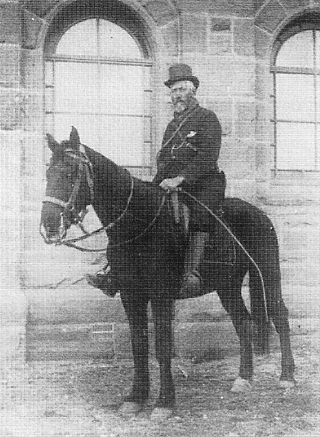
Christoffel Cornelis Froneman, commonly known as Stoffel Froneman, was veldkornet, general and Vice-Commander-in-Chief of the Orange Free State Boer forces during the Anglo-Boer War of 1899-1902.

Winburg Commando was a light infantry regiment of the South African Army. It formed part of the South African Army Infantry Formation as well as the South African Territorial Reserve.

Petrus Johannes Liebenberg was a Boer general in the Anglo-Boer War (1899–1902).
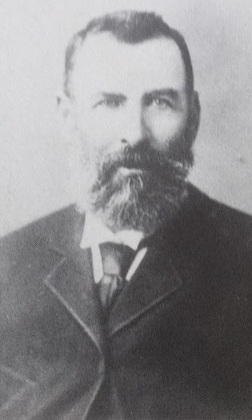
Ignatius "(Oom) Naas" Stephanus Ferreira was an Orange Free State Boer war general and Commander-in-Chief, who was fatally shot at the Battle of Paardeberg. Naas Ferreira should not be confused with his son and namesake Ignatius "Natie" Stephanus Ferreira, the gold miner Ignatius Philip Ferreira, and Boer general J. (Joachim) Ferreira.
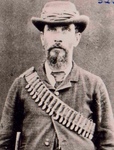
Andries Petrus Johannes Cronjé was a Second Boer War general, like his older brother Piet Cronjé. After surrendering to the British he became a prominent member of the National Scouts Corps, who assisted the British military against the remaining Boer guerillas in the last years of the Boer War. A.P.J. Cronjé should not be confused with Boer general Andries Petrus Cronjé, who was captured and sent to Bermuda by the British.
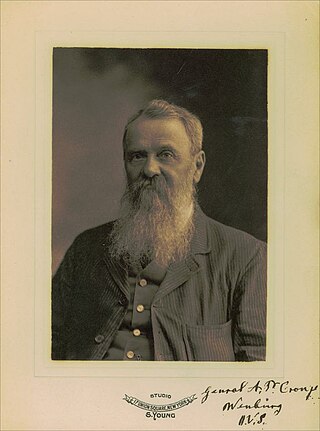
Andries Petrus Cronjé was a Second Boer War Boer general and a member of the Orange Free State Volksraad and the Orange River Colony parliament. He should not be confused with Boer general Andries Petrus Johannes Cronjé, who surrendered and cooperated with the British in the National Scouts.
